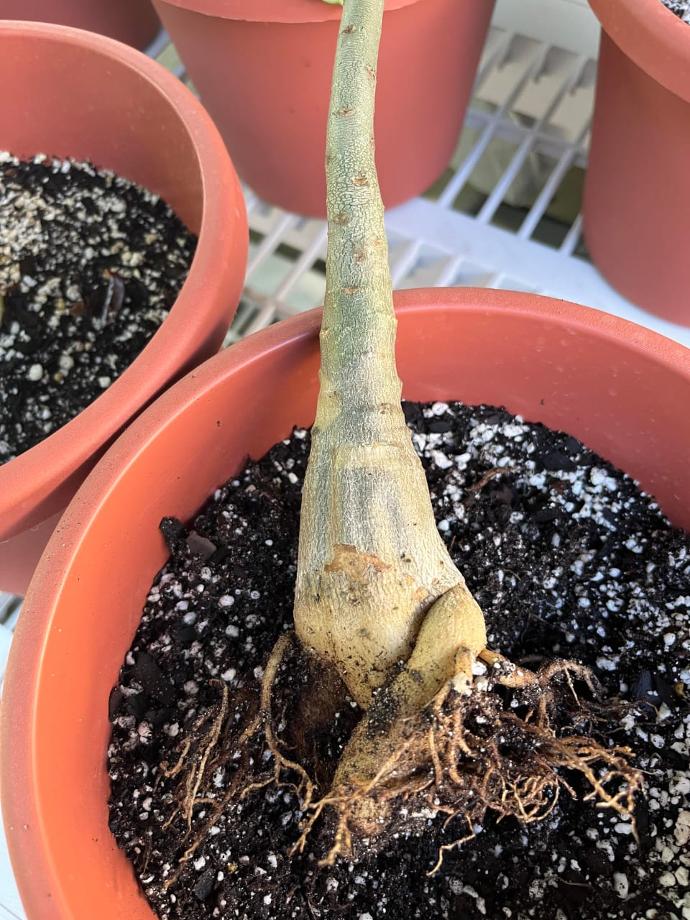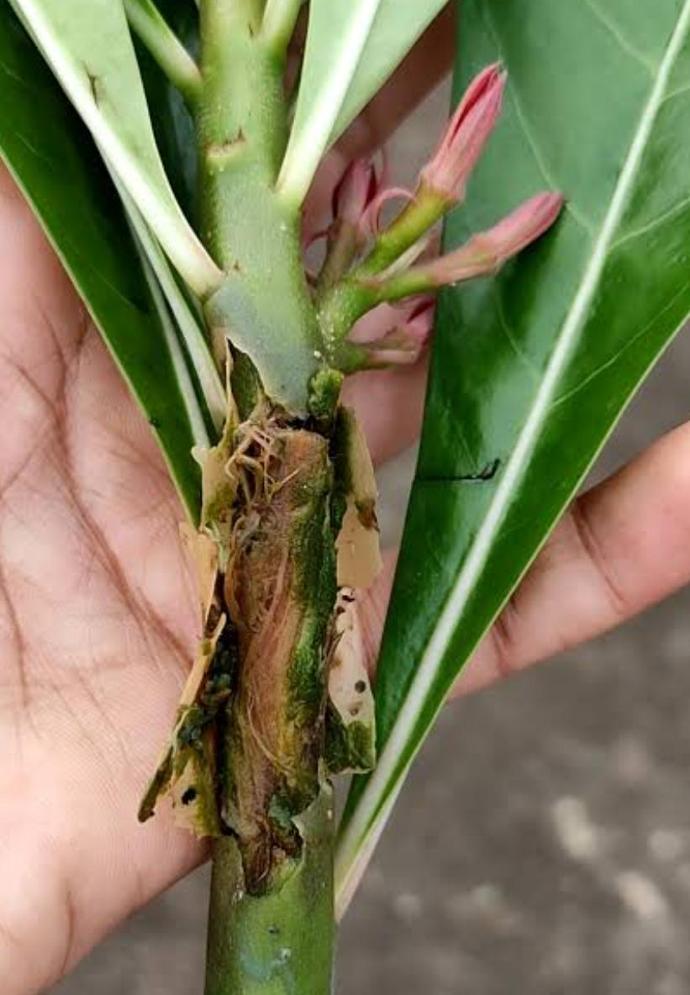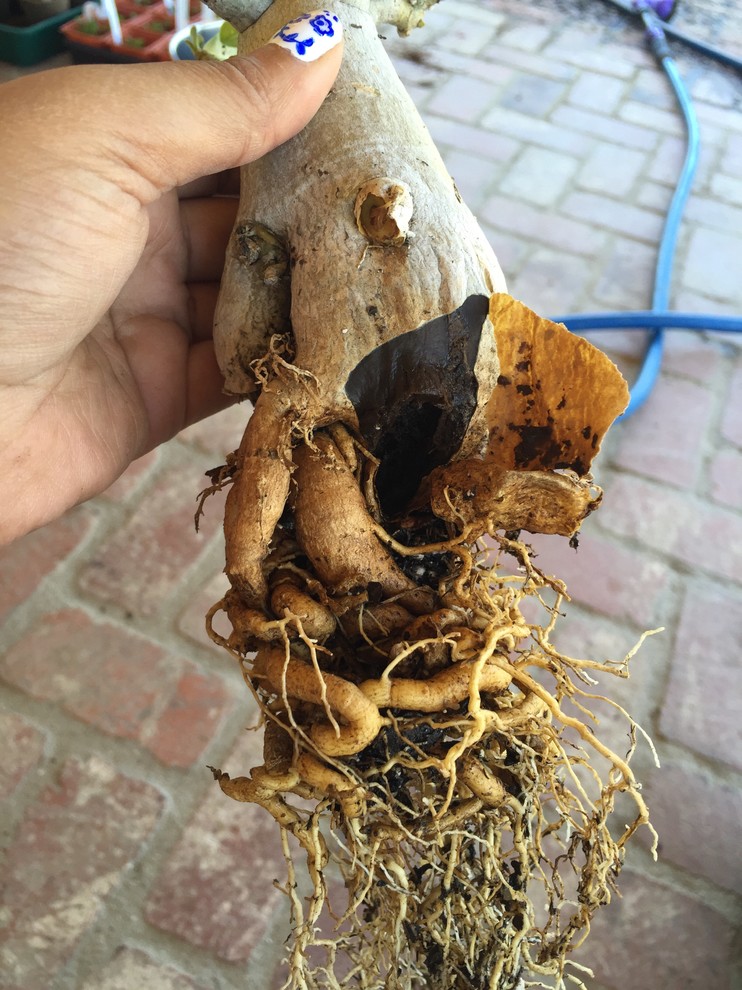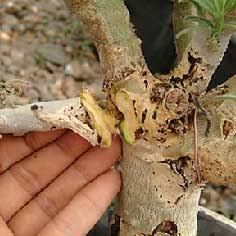Adenium Plant
Adeniums, succulents with slow growth, thrive in well-drained soil and full sun. With low moisture needs, they are known for their unique swollen stems and are often grown for their ornamental value.
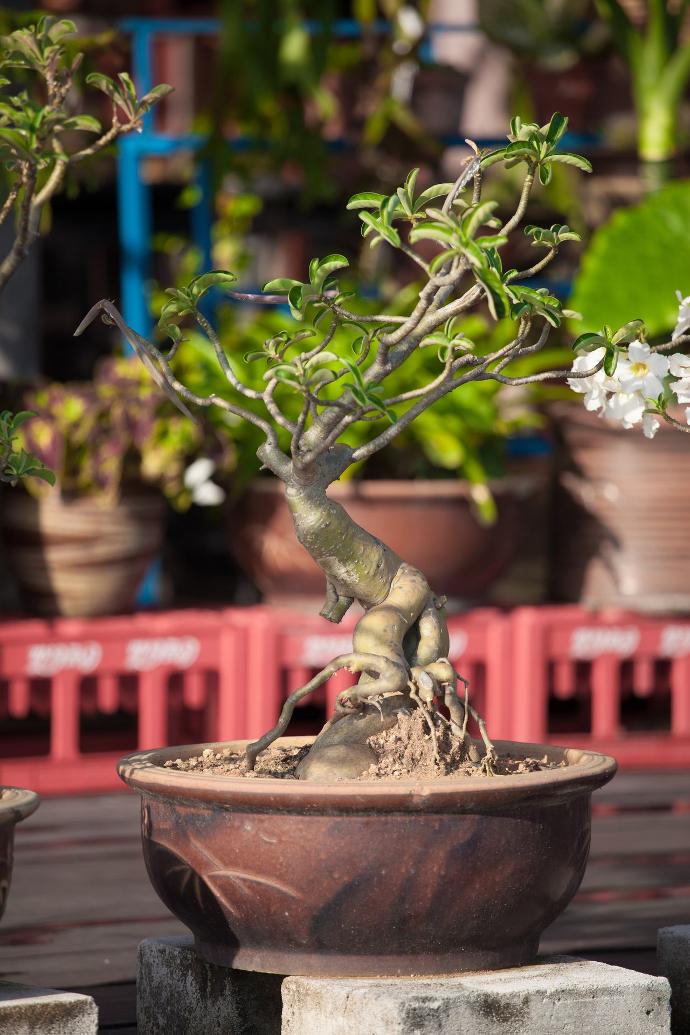
Habit
Succulent
Height
3-10 ft
Growth
Slow
Soil
Well Drained
Shade
Full Sun
Moisture
Low
Edible
No
Medicinal
No
Origin
Africa
Climatic Condition
Arid, Dry
Temperature (°)
20-40°C
Humidity (%)
20-50%
Potting media
Gritty Soil
Fertilizers
Low Nitrogen (5:10:5)
Watering
Low, Drought tolerant
Plant Weight
500-1000 g
Flowering Time
Spring-Summer
Soil Ph level
5.5-7.5
Water Ph level
6.0-7.5
Soil EC
0.8-1.5 dS/m
Yield Per Plant
Ornamental
NPK ratio
10:10:10
life Span
10-20 yrs
Health Benefits
Suggested Grow Media or Potting Mix ?
33% potting soil, 33% sand, 33% perlite
Suggested Fertigation/Fertilizers
Fertilize every 4 weeks with a balanced, low-nitrogen fertilizer.
Common Diseases and Remedies
Stem and Root Rot
Yellow to dark brown spotting's on stems
Trichoderma viridae Powder
HEALTH BENEFITS
Adenium, commonly known as Desert Rose, is a striking plant with beautiful flowers, and while it is mostly admired for ornamental purposes, it is also used in traditional medicine in some cultures. Here are a few health benefits that have been associated with Adenium:
- Anti-inflammatory properties: Some studies suggest that Adenium may have anti-inflammatory effects, which can help reduce swelling or pain in conditions like arthritis.
- Antimicrobial effects: The plant has been traditionally used for its ability to fight bacteria, fungi, and other pathogens, making it potentially useful for treating infections.
- Wound healing: In some traditional medicine practices, Adenium has been used topically to promote faster healing of wounds, cuts, and bruises.
- Anti-cancer potential: There are ongoing studies investigating the anti-cancer properties of Adenium. Some early research indicates it may have compounds that can inhibit the growth of certain cancer cells, but more studies are needed.
- Digestive aid: In some cultures, Adenium is used as a remedy for digestive issues, such as diarrhea or indigestion.
However, it is important to note that Adenium is toxic if consumed in large amounts. It contains compounds that can be harmful to humans and animals, so it should be handled with caution. Always consult a healthcare provider before using it for medicinal purposes.
What Is An Adenium ?
Adenium, commonly known as desert rose, is a tropical succulent from the Apocynaceae family. It is native to arid regions of Africa and the Middle East and is characterized by a swollen, bulbous base (stem) that stores water, allowing the plant to survive dry conditions. The plant produces beautiful, often fragrant, trumpet-shaped flowers in many colours, including red, pink and white. Oleanders are popular as ornamental plants and are often grown in pots or containers. They need well-drained soil, full sun and minimal watering to thrive.
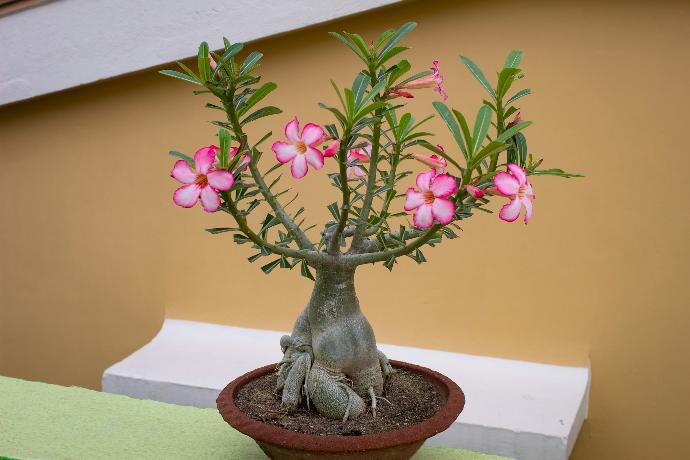
What Are The Different Types Of Adenium Plants?
1. Adenium obesum
It is the most common species known for its bulbous stems and colourful flowers.
2. Arabian Strait
A small breed with a better growth habit, usually pink or red.
3. Somali Desert Rose
Characterized by its long, narrow leaves and white or pale flowers.
4. Adenium socotranum
This species, which is native to the island of Socotra, has a distinctive pitcher-shaped body.
5. Adenium boehmianum
Known for its stiff, curved branches and attractive flowers.
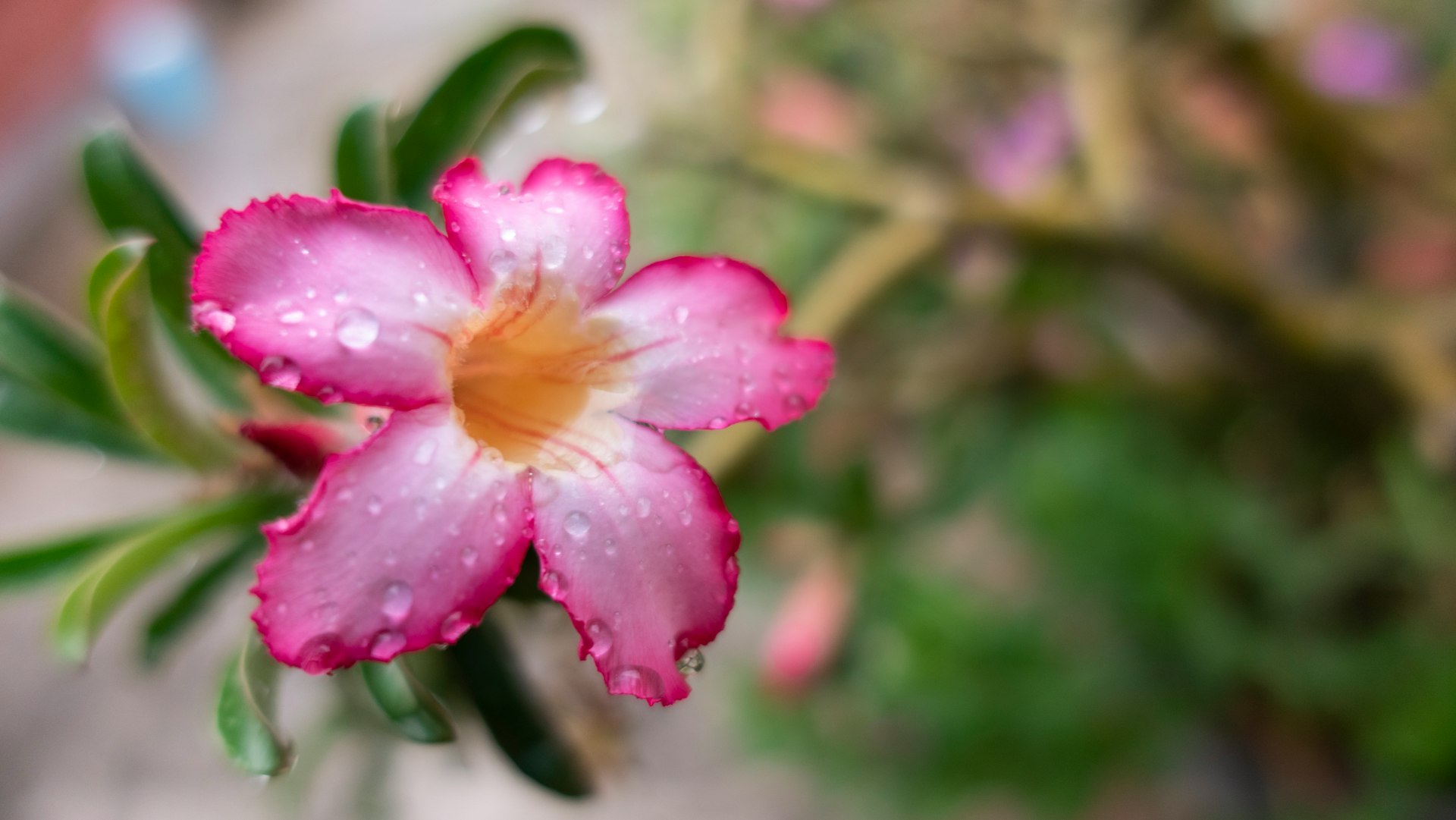
How to care for Adenium Plant ?
In the processing of desert roses, correct conditions must be provided so that their habitats can be monitored. Here are some maintenance tips:
1. Location
Choose a sunny location for your oleander plant, as this plant thrives in full sun. Ideally, place them where they will receive at least 6-8 hours of direct sunlight per day. A sunny window sill, balcony or a sunny place in the garden is suitable. Make sure the location has good air, and if you're growing oleanders in a container, use good soil to prevent water stagnation. Also protect them from frost as they love warmth and are sensitive to cold. If temperatures drop, consider moving them indoors or providing adequate shelter to stay healthy.
2. Sunshine
Desert rose, also known as desert rose, thrives in full sun. Ideally they should receive at least 6-8 hours of direct sunlight per day. Place them where they will receive plenty of sunlight, such as on a sunny windowsill, balcony, or sunny spot in the garden. Adequate sunlight is essential for the health, growth and flowering of your oleander plant. If you're growing them indoors, be sure to place them near a bright window so they can get plenty of sunlight.
3. Soil
Adenium plants prefer well-drained soil to prevent water stagnation as they are susceptible to root rot. You can use cactus or succulent mix, or create your own well-drained mix by combining perlite, sand and potting soil. This type of soil allows water to drain quickly and not accumulate around the roots. When potting or repotting your Adenium, remember to use a container with a well to add water appropriately. To maintain the health of your oleander plant, check the soil moisture regularly and allow the water to dry.
4. Hydration
Adenium is a succulent plant adapted to drought conditions and can tolerate drought better than overwatering. Here are some Adenium hydration tips: Water regularly and allow the soil to dry out of water. Overwatering can cause root rot, a common problem in flowering plants. Reduce watering during the dormant period, usually in the cold months, because your oleander needs less water during this period. Use well-drained soil and make sure water drains out of the pot. Adenium flowers are very sensitive to flooding. Do not allow the plants to get wet in water, after watering, place a bowl under the pot to ensure it receives more water. Adjust your watering time according to your climate. In hot, dry climates you need to water more frequently.
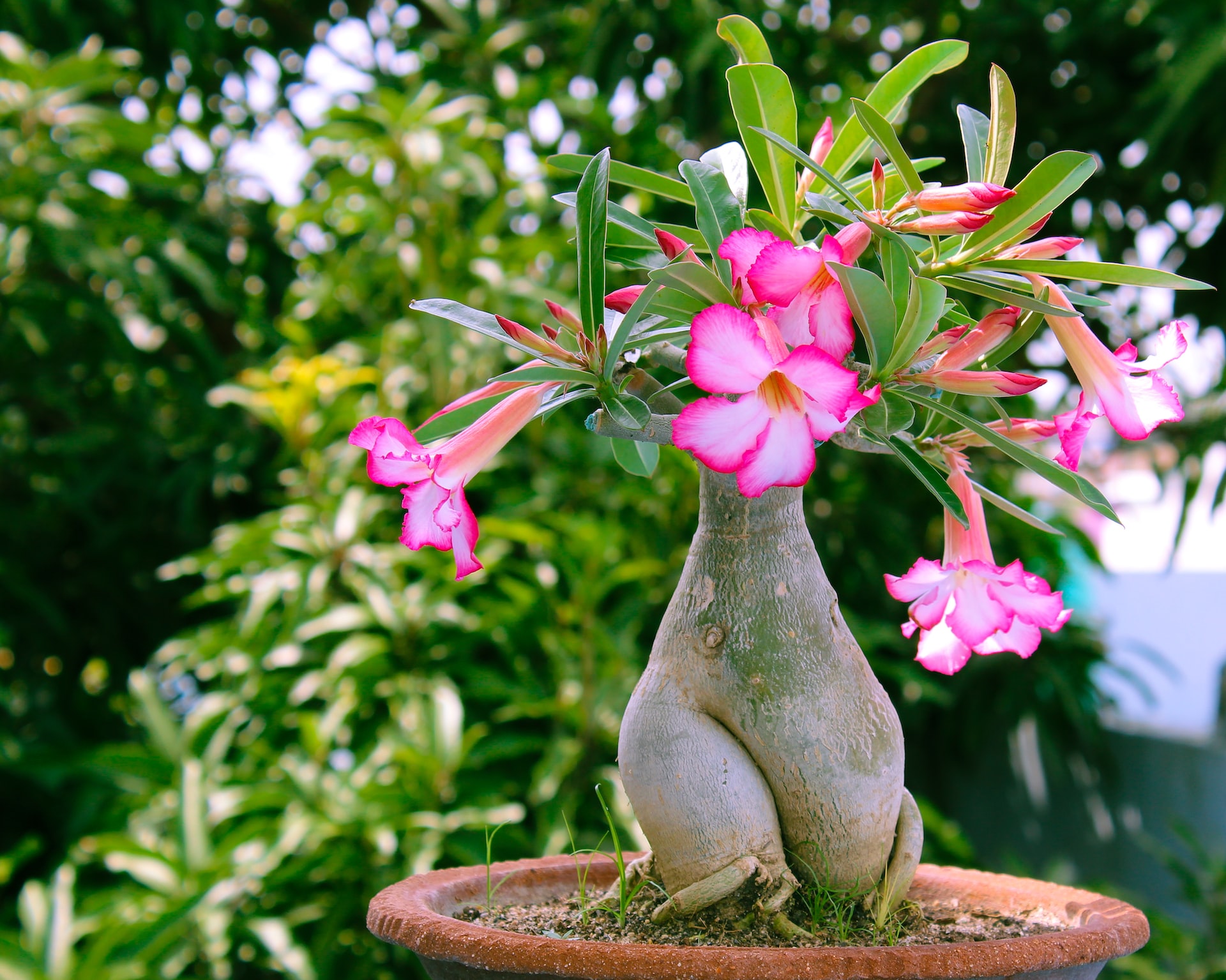
5. Nourishment
To care for your oleander plants, you can use a water-soluble balanced fertilizer during the growing season (spring and summer). A typical NPK ratio for adenium is approximately 10-10-10 or similar, representing the percentage of nitrogen (N), phosphorus (P), and potassium (K) in the fertilizer. Fertilize every 2-4 weeks during the growing season. Follow package instructions for diluting fertilizer and avoid overfertilization as this will cause salt build -up in the soil. Reduce or stop fertilizing in autumn and winter when the flower can go into dormancy. You can use fertilizers containing micronutrients or use special micronutrient supplements. Always water well before applying fertilizer and be careful not to apply fertilizer to dry soil as this will burn the roots. Adjust your fertilization regimen according to the specific needs of your plants and signs of nutrient deficiency or excess.
6. Issues
Adenium plants, while generally hardy, can face some common issues. Here are a few problems to watch for: Overwatering or poorly draining soil can lead to root rot. Ensure the soil is well-draining and allow it to dry out between waterings. This can be a sign of overwatering, nutrient deficiencies, or poor soil drainage. Adjust your watering schedule and consider fertilizing appropriately. Adeniums may attract pests like aphids, spider mites, or scale insects. Treat promptly with insecticidal soap or neem oil. Wet conditions can lead to fungal issues. Ensure good air circulation, avoid overwatering, and treat with fungicides if necessary. Sudden leaf drop can result from changes in temperature, overwatering, or pests. Address the underlying cause promptly. While Adeniums love sunlight, intense or sudden exposure to full sun can lead to sunburn. Gradually acclimate them to direct sunlight to avoid this. Keep an eye on leaf colour. Yellowing or unusual discoloration could indicate a nutrient deficiency. Adjust your fertilization accordingly. Regularly inspect your Adenium for any signs of distress, and address issues promptly to maintain a healthy plant. Adjusting watering, providing proper sunlight, and maintaining good soil drainage can go a long way in preventing common problems.
What are the Benefits of Adenium Plants ?
While Adenium plants, commonly known as Desert Roses, are primarily grown for their ornamental value, there are a few indirect benefits associated with having these plants:
Adeniums are prized for their unique caudex (swollen trunk) and vibrant, showy flowers. They add a touch of beauty to indoor and outdoor spaces. Adeniums are relatively low-maintenance compared to some other ornamental plants. Their ability to withstand drought makes them suitable for individuals who may forget to water regularly. Due to their natural bonsai-like appearance, Adeniums are popular choices for bonsai enthusiasts. Growing them in a bonsai style can be a rewarding and creative endeavor. Adeniums can be grown indoors in containers, adding a touch of nature to interior spaces. Ensure they receive adequate sunlight and proper care. Growing and caring for Adeniums can be a fulfilling gardening hobby. Many people enjoy the process of nurturing these plants and witnessing their unique growth patterns. While there may not be direct health or environmental benefits associated with Adeniums, the joy they bring through their visual appeal and the satisfaction of growing them can contribute positively to one's well-being and environment.
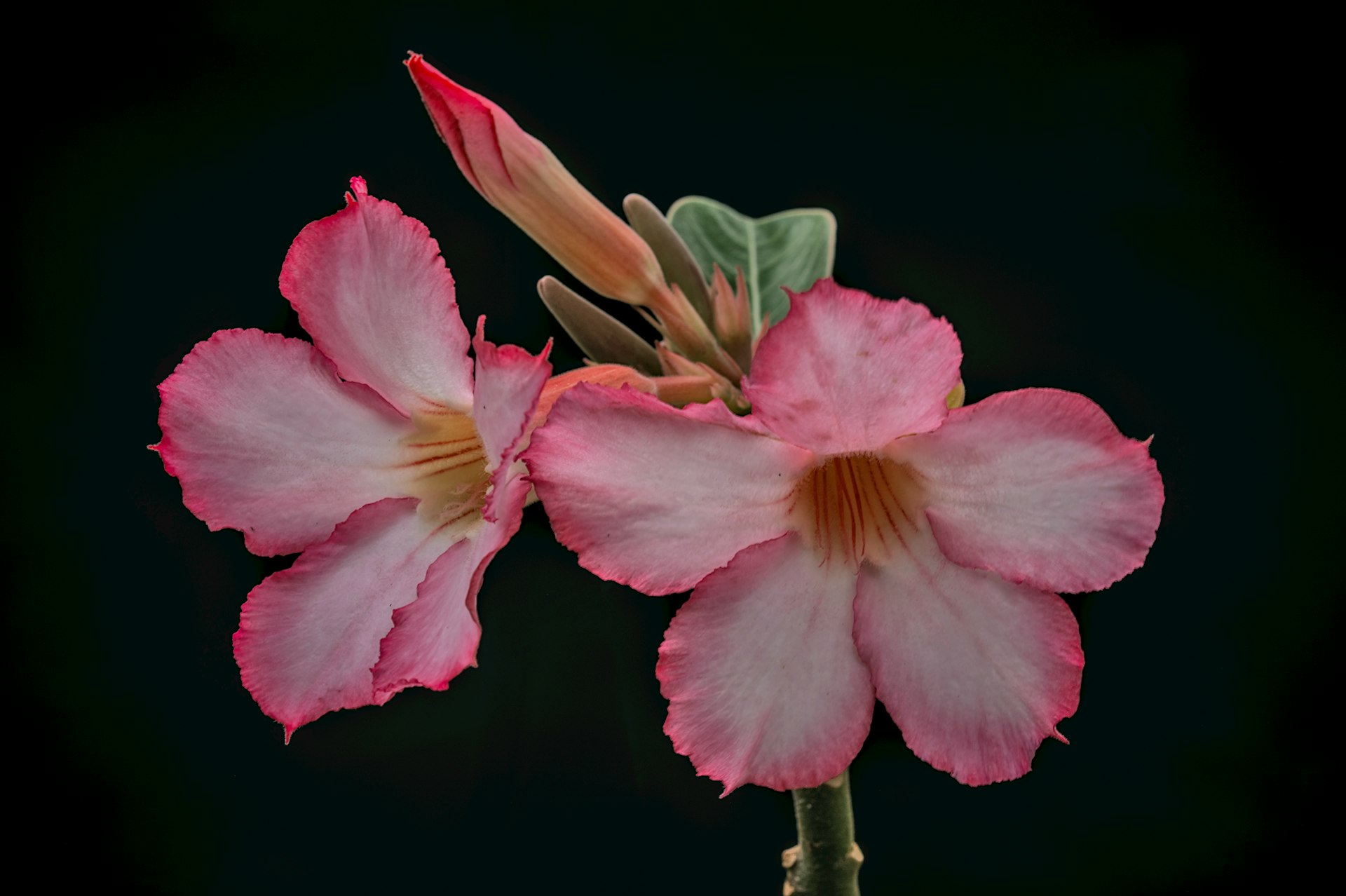
FAQs About Growing Adenium
1. How to maintain adenium plant ?
Provide ample sunlight, at least 6 hours of direct sunlight daily. Allow the soil to dry between watering, as adeniums are drought-tolerant. Water sparingly in cooler months. Plant in well-draining soil to prevent waterlogging, as adeniums are susceptible to root rot. Use a pot with drainage holes to prevent water accumulation. Adeniums prefer warm temperatures; protect them from cold drafts and frost . Use a balanced fertilizer during the growing season, but reduce or stop in winter. Trim to shape the plant and remove dead or unhealthy branches. Watch for pests like spider mites and aphids; treat promptly with insecticidal soap if needed. In cooler climates, protect adeniums from frost by bringing them indoors or providing cover. Adeniums may drop leaves in winter; reduce watering and allow a rest period.
2. What are the uses of adenium ?
Adeniums are primarily grown for their striking appearance and unique caudex (swollen stem). They make attractive ornamental plants in gardens, landscapes, and as potted plants. Adeniums are popular choices for bonsai enthusiasts due to their ability to develop interesting trunk shapes and vibrant flowers in a compact size. In some cultures, parts of the adenium plant are used in traditional medicine, although caution should be exercised as some parts can be toxic if ingested. Adeniums are used in xeriscaping and arid landscaping due to their drought-tolerant nature and striking appearance . In some regions, adeniums are associated with symbolism. For example, they are often considered symbols of endurance and strength. Adeniums are frequently hybridized to produce new cultivars with different flower colours, patterns, and forms. While primarily appreciated for their aesthetic qualities, it's essential to note that parts of the plant can be toxic, so care should be taken in handling and cultivation.
3. Can I grow adenium plant as indoor ?
Adeniums require plenty of sunlight. Place them near a south or west-facing window where they can receive at least 6 hours of direct sunlight each day. If natural light is insufficient, you may supplement with grow lights. Use a well-draining potting mix to prevent waterlogging. A mix formulated for cacti and succulents is often suitable. Use a pot with drainage holes to avoid water accumulation, and consider a slightly larger pot to accommodate growth. Adeniums prefer warm temperatures. Keep them in an environment with temperatures above 50°F (10°C) and protect them from drafts. Water sparingly and allow the soil to dry out between waterings. Overwatering can lead to root rot. Adeniums are adapted to arid conditions, so they generally tolerate lower humidity levels. However, ensure good air circulation to prevent issues like mould. During the growing season, provide a balanced fertilizer at half-strength every 4-6 weeks. Reduce or stop fertilizing during the dormant period in winter. With proper care and attention to their specific needs, adeniums can thrive as indoor plants, adding a unique touch to your indoor greenery.
4. Which pot is best for growing adenium plant ?
For growing adenium plants, it's essential to choose a pot that meets their specific needs. Here are some guidelines for selecting the best pot:
Optimum for a pot with drainage holes to ensure proper drainage and prevent waterlogging. Adeniums are susceptible to root rot if their roots sit in water for extended periods. Choose a pot made of breathable materials such as clay or terracotta. These materials allow for air exchange and help the soil to dry out more effectively. Select a pot that accommodates the size of your adenium's root ball, with some extra space for growth. However, avoid using an excessively large pot, as adeniums prefer a slightly snug fit. Adeniums have a unique caudex (swollen stem), so consider a pot with sufficient depth to accommodate the growth of the caudex. Consider the aesthetic appeal of the pot, as adeniums are often grown for their ornamental value. Choose a pot that complements the overall look of your plant and the surrounding environment. Remember to repot your adenium every few years to refresh the soil, inspect the roots, and potentially move it to a slightly larger pot if needed. Proper pot selection contributes to the overall health and well-being of your adenium plant.
5. How adenium plant will propagate ?
Adenium plants can be propagated through various methods. Here are two common ways to propagate adeniums:
1. Seed Propagation: Collect mature seeds from a healthy adenium plant , Soak the seeds in warm water for a few hours to soften the seed coat , Plant the seeds in a well-draining soil mix, covering them lightly with soil , Keep the soil consistently moist until germination occurs , Once the seedlings have grown large enough, transplant them into individual pots.
2. Cutting Propagation: Take a cutting from a healthy adenium plant using a clean, sharp knife or pruning shears , Allow the cut end to dry and callus for a day or two to reduce the risk of rot , Plant the cutting in a well-draining soil mix, burying it a couple of inches into the soil , Water the cutting sparingly, allowing the soil to dry out.
